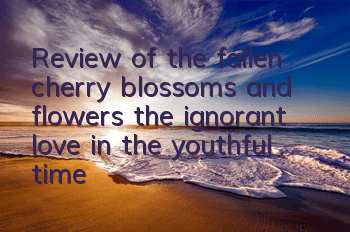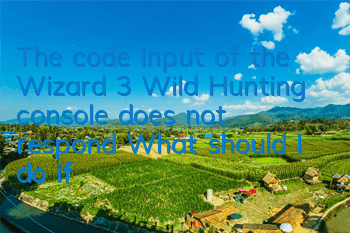Persona 4: Golden Edition Review: Still the most worthy JRPG
Although it is undeniable that based on the aesthetic standards of today's players' games, the eight-year-old Persona 4: The Golden Edition will seem a bit unsatisfied with the times in some aspects. But I still have to say that Persona 4: Golden Edition is definitely one of the best JRPGs players can play right now. It is worth adding to their wishlist by every JRPG enthusiast.
The Persona series has made large-scale changes to the overall style and gameplay of the game since the third generation of the main works. These changes had already formed a complete and unique system when Persona 4: Golden Edition was launched. The subsequent "Generation of Magical Works" "Persona 5" was basically followed by this mature model, so that it became the most popular JRPG in recent years. Therefore, for players who are already familiar with the gameplay of Persona 5, it is not difficult to accept Persona 4: Golden Edition. Players can find many similar elements as Persona 5 in the game process of Persona 4: Golden Edition, and it is naturally very easy to get started. For players who are first exposed to the series, "Persona 4: Golden Edition" will be a slow-heating game. Its various gameplay designs will be a bit complicated, and it requires adapting to the process for several hours in the early stage to gradually understand the tricks. Once you understand the design intention of these gameplays, it will naturally not be difficult for players to understand the charm of this series.
In "Persona 4: Golden Edition", players will play the leading role of high school student "Narukami Yu" (official name of the animation version), transfer from a metropolis to a small town called "Bashidaoyu", and conduct a one-year high school study and life. In this process, by investigating a series of mysterious cases in the town and the different worlds appearing on TV late at night, the protagonist will gradually encounter many characters with different personalities and become ties with them, thus helping himself investigate the truth behind the incident and complete the reversal of his fate.
Like the sequel "Persona 5", the game process of players in this game still revolves around the daily life of high school students and the exploration of mazes, these two core themes. These two core themes are closely linked by the so-called personality masks in the game.
Persona, the Persona that appears in the title of the game, comes from the famous psychology school - Jungian Psychology. This school collectively calls human psychology personality and divides it into three levels: consciousness, individual unconsciousness, and collective unconsciousness. It alludes to the "Persona" series of games, when the characters in the story can realize their true thoughts, they will transform from individual unconsciousness to consciousness, thereby awakening their own personality mask. The protagonist played by the player, as a talented person, needs to do, is to help while investigating cases in another world.The companions around them untie their hearts and awaken their personality masks, cultivate bonds by increasing their favorability with the characters, and ultimately reverse the "collective unconscious" status quo in the entire society, and achieve their goal of "reversing the will of heaven and changing fate". This seemingly secondary second-class setting is just right in line with the protagonist's identity as a high school student.
In the daily life part of the protagonist as a high school student, the game tries its best to restore the campus life of Japanese high school students. In addition to completing the fixed academic work each semester, players can also choose to participate in club activities, work, go shopping, etc. in their daily itinerary, which are in line with the living habits of Japanese high school students. The daily process can be freely customized according to the player's preferences, allowing players to enter the life of high school students in the game. Participate in these colorful activities, and aim to cultivate the protagonist's five-dimensional index and the friend's Rank level. The game has established a mature character development gameplay.
Five-dimensional index, namely the protagonist's own five values: knowledge, perseverance, tolerance, expression and courage. Depending on the stage, each value will be divided into different levels. Players need to participate in specific activities to improve the five-dimensional index, thereby achieving character growth. Similarly, Rank level is also an important way to develop characters in the game. Whenever the player chooses to spend his leisure time after school with a character, the favorability of the corresponding character will be increased. When the favorability accumulates to a certain stage, the corresponding Rank level will rise. In addition to triggering additional plot dialogues, it will also have a certain impact on the player's subsequent process.
Whether it is cultivating five-dimensional values or improving the Rank level, the two are intertwined in the entire daily gameplay. The five-dimensional index affects the dialogue options that players can choose, and the increase in favorability will further enrich the numerical rewards that players receive. This system provides players with a large number of opportunities for free choices. Each player can plan a unique training path based on their preferences for character training, thereby obtaining a different process experience. Although in most cases, players will try their best to fill up each value, in this process, thinking about daily action arrangements is enough for players to be addicted to it.
This cultivation system was also inherited into the sequel to "Persona 5". However, compared with the mature use in Persona 5, its performance in Persona 4: Golden Edition is still remarkable. First of all, he did not give players a clear choice tip. In Persona 5, players can freely view the accumulation of the five-dimensional index, which makes it easier to formulate daily action plans. However, in Persona 4: Golden Edition, similar mechanisms are lacking, and a large number of side tasks are interfered with. Players often fall into an embarrassing situation of losing sight of one or the other when arranging their daily activities.
In Persona 5, the game provides rich tips and simplifies the difficulty of choice as much as possible, while Persona 4: HuangThe daily part of the Golden Edition seems more complex and logically rigid. Even if you choose the guide book step by step, you may accidentally miss certain content, which will affect the progress of the subsequent process. Moreover, the most important thing is. If you really follow the strategy process to experience the game step by step, it will be difficult to experience the fun of this game in daily activities.
Another core gameplay for this game - maze combat. The process experience is almost the same as the sequel "Persona 5". But in terms of the level design of the maze, "Persona 4: Golden Edition" is obviously not as outstanding as "Persona 5". It uses a randomly generated maze map similar to the impression space in Persona 5. The experience of the maze exploration part is relatively mediocre, the maze scene is single, and the fun it deserves is lost due to the lack of puzzle solving content. It is purely by superimposing the number of levels to make up the game duration. For players who have experienced Persona 5, there will be some regrets. But this is an old game 12 years ago, and it is understandable that some aspects of design are backward.
The design of the combat part basically retains the tradition of the series' predecessors. In addition to basic attribute restraint and auxiliary BUFF effects, the series' unique additional attacks and team total attack settings have further improved the strategy of the battle. In addition, "Persona 4: Golden Edition" also added additional card draw gameplay at the end of the battle, which enriched the fun of the game to a certain extent. This mini-game-style design was changed to a torture session after stunning the enemy in the sequel. I personally feel that I have lost the original fun.
The synthesis of personality masks is still an indispensable part of the battle. The mask synthesis system of this game still maintains extremely high playability. The synthesis, strengthening and logging of masks requires a lot of energy to study the skills. Although the way of cultivating masks in this work is not as rich as in the sequel, it is believed that players who are obsessed with collecting can still gain great satisfaction.
Although "Persona 4: Golden Edition" is already an old work that has been launched for 8 years, it is definitely worth every player who loves JRPG to experience it with this opportunity to enter the Switch and join the XGP platform. Even if I don’t talk about how complete the game itself is, just looking at the sales of the game on Steam and the number of online players on the platform, I don’t need to explain more about its popularity.
What's more, this time "Persona 4: Golden Edition" has been launched on the Switch and joined the XGP platform, giving players multiple options that are portable and affordable.









